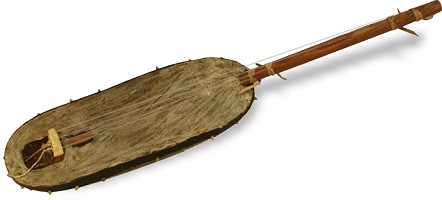Malian musician Bassekou Kouyate and his band Ngoni Ba played at the Pritzker Pavilion in Millennium Park on Thursday, 10 June 2010. Their music was exhilarating and thrilling. It continues to amaze me that they can get so much music out of such “primitive”-looking instruments as the ngoni.
As someone who is still learning to play a six-string fretted guitar, It’s hard to imagine how one can play a four-stringed unfretted instrument with such apparent ease and precision. They played their hypnotic music for a little over an hour.
As an introduction to the Chicago Blues Festival that began the following night, Barry Dollins came on stage and announced the Howlin’ Wolf tribute (yesterday was the 100th anniversary of his birth). Otis Taylor came out with Eddie Shaw and Hubert Sumlin. They played a few Wolf tunes (“Spoonful,” “Back Door Man,” “Shake It”) with the Kouyate group. Taylor played a white Fender Telecaster, Shaw played sax and sang, and Sumlin played his well-worn Strat. He had his oxygen tank with him and had to sit, but he seemed to be having a good time.
The jam was a chaotic mess. Taylor mostly just played a rhythm line. Sumlin’s guitar was hard to hear whenever he got a chance to solo. I imagine they never rehearsed, but I’m surprised that they didn’t do it so everyone got a chance to be heard. Fortunately, I’d heard Otis Taylor and Hubert Sumlin before so I knew what they were capable of, but it wasn’t a good introduction for new listeners.
